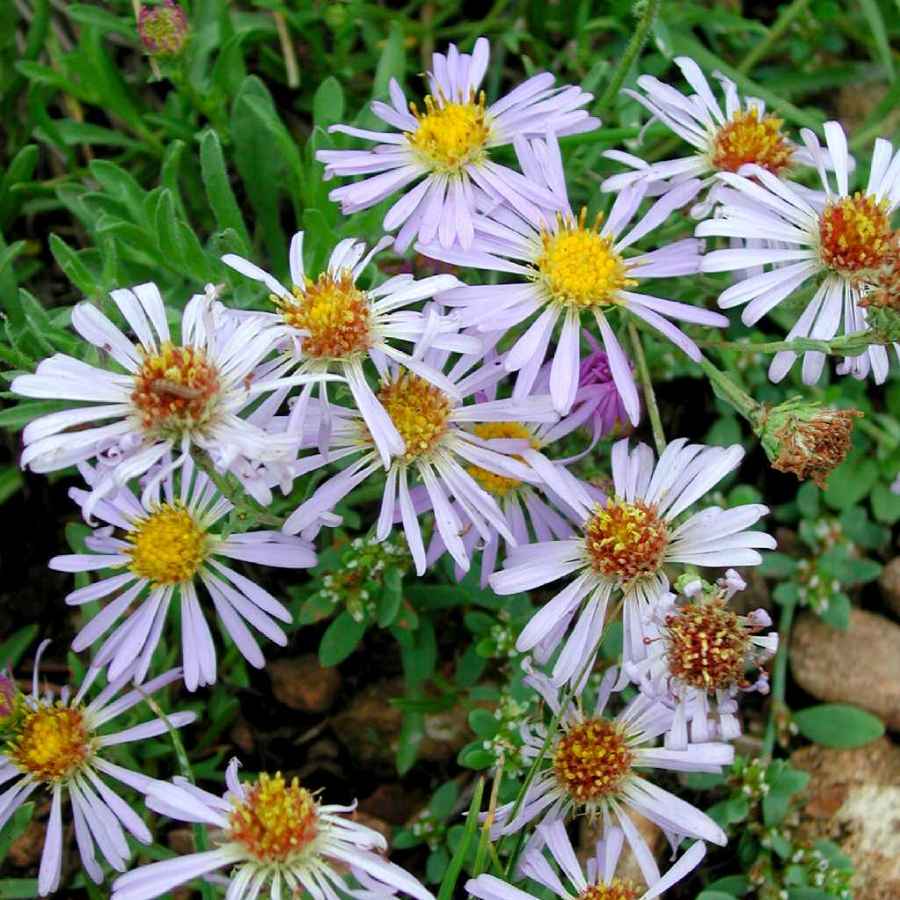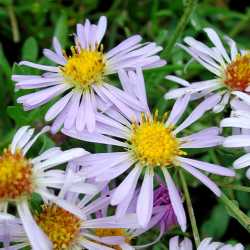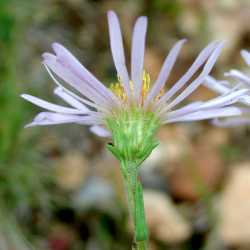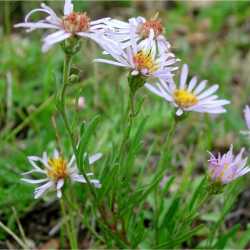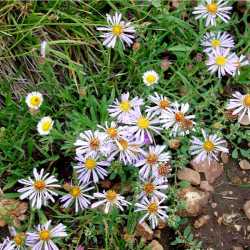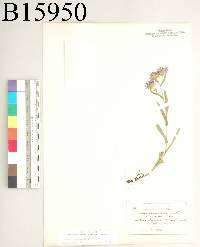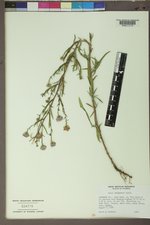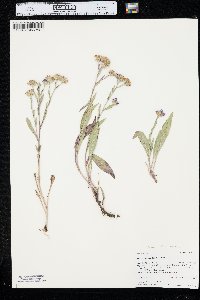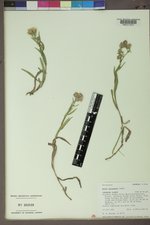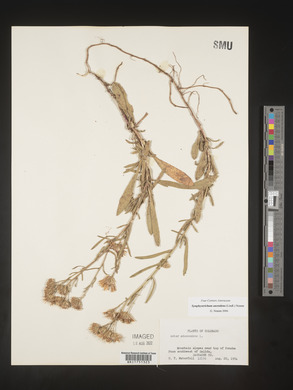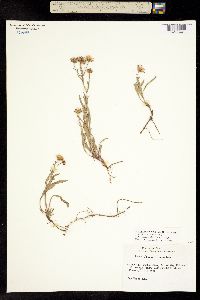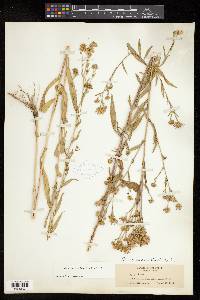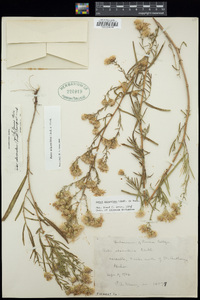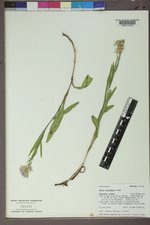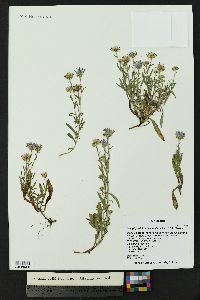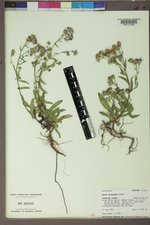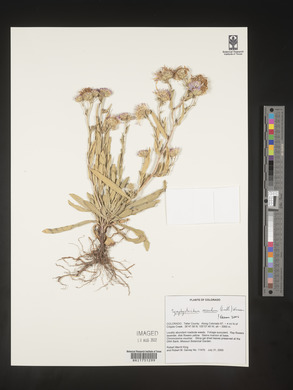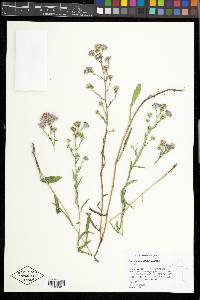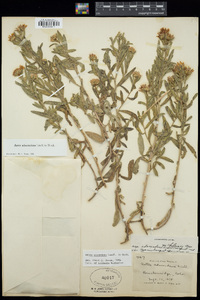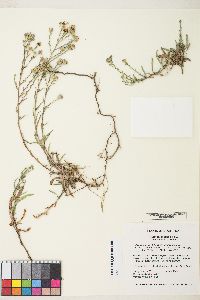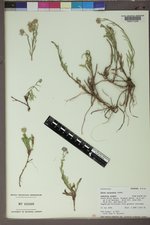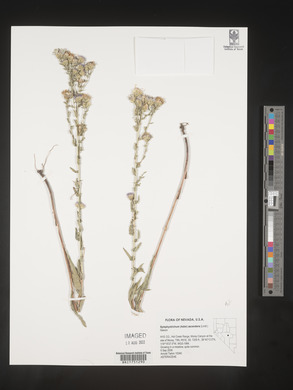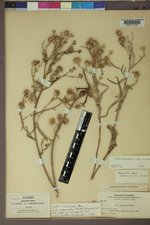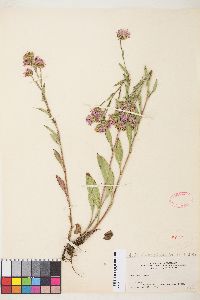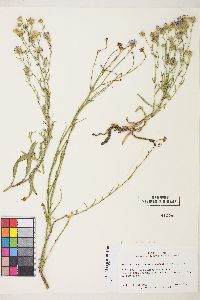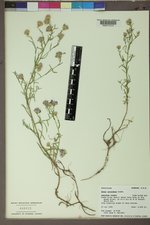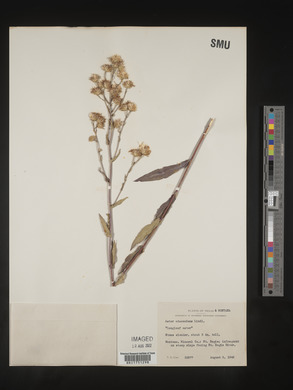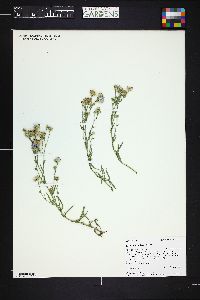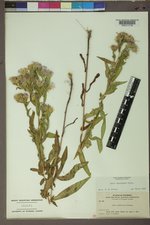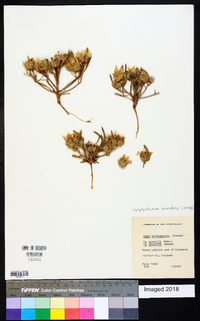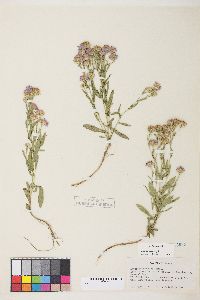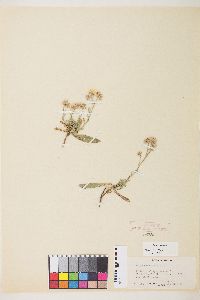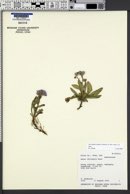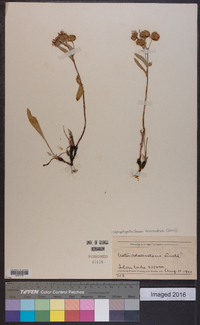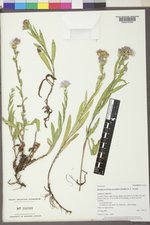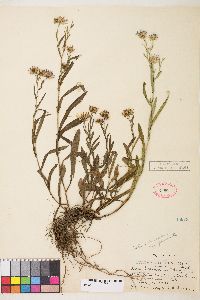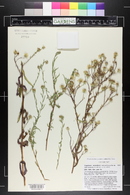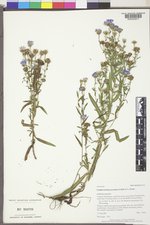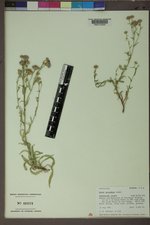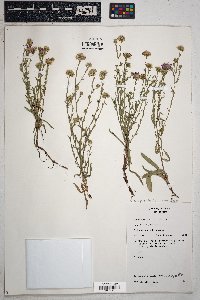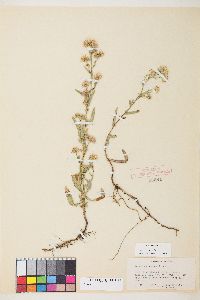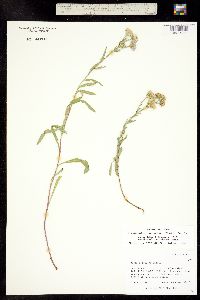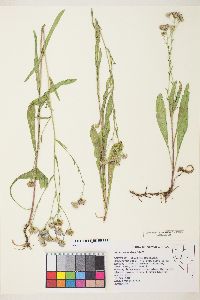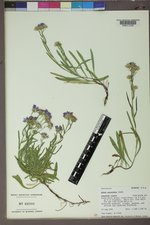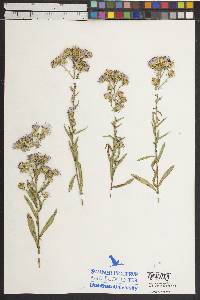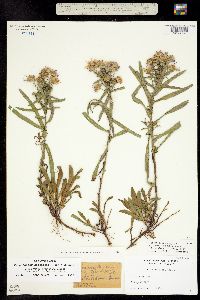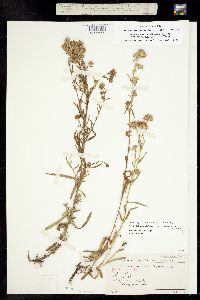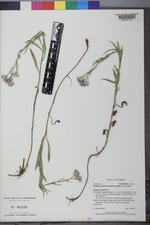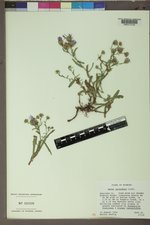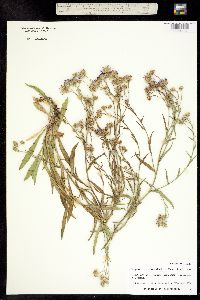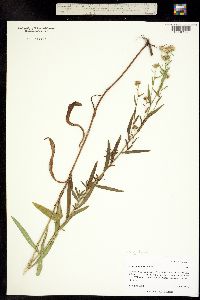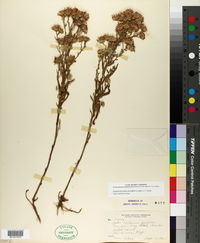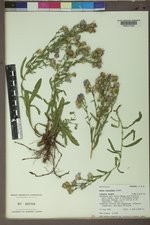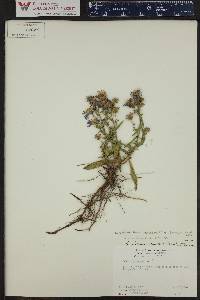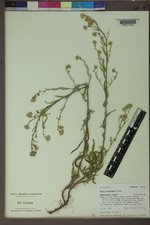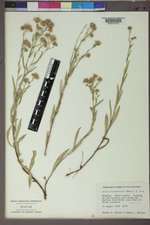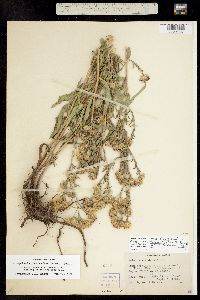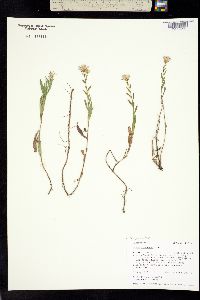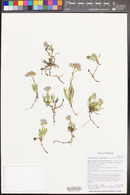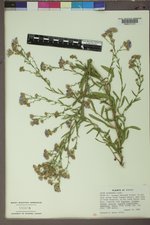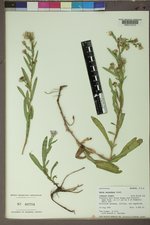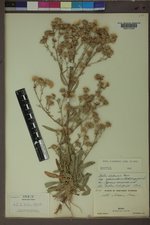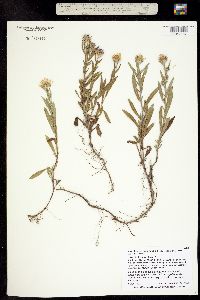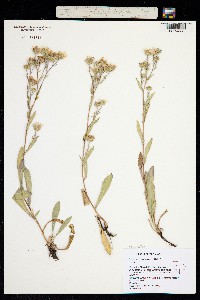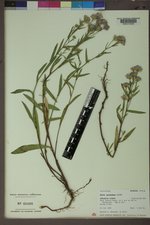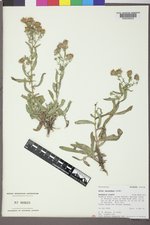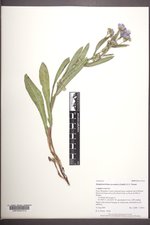
|
|
|
|
Family: Asteraceae
Western American-Aster, more...western aster, Chile aster
[Aster adscendens Lindl., moreAster ascendens Lindl., Aster chilensis subsp. adscendens (Lindl.) Cronq., Aster macounii Rydb., Aster nuttallii , Aster subgriseus Rydb., Virgulaster ascendens (Lindl.) Semple] |
Perennials 20-60 cm, colonial; long-rhizomatous. Stems 1-5+, ascending to erect, densely and uniformly strigose, especially distally. Leaves (grayish green) thin to firm, margins entire, apices acute, faces glabrous or strigose; basal usually persistent, petiolate, blades oblanceolate, 50-150 × 5-12(-15) mm, bases attenuate or cuneate, margins entire, apices usually acute; proximal cauline sessile or subpetiolate, blades oblong to narrowly obovate, 50-120 × 5-12 mm, bases attenuate or cuneate; distal sessile, blades 30-70 × 4-10 mm, reduced distally, bases cuneate to ± rounded. Heads in paniculiform arrays, branches ascending. Peduncles moderately to densely strigose, bracts 1-4, linear to oblanceolate. Involucres campanulate, 4-7 mm. Phyllaries in 3-5 series, narrowly oblanceolate or linear (outer) to linear (inner), unequal, bases indurate, margins entire, green zones obovate to elliptic, apices obtuse, faces densely strigose. Ray florets (10-)15-40; corollas violet, laminae 8-13 × 1-1.5 mm. Disc florets 25-65(-80); corollas yellow, sometimes purple-tinged, 4-6 mm, lobes triangular, 0.4-0.8 mm. Cypselae brown, cylindric to obovoid, not compressed, 2-3.5 mm, 3-5-nerved, faces hairy; pappi whitish, 4-7 mm. 2n = 26, 36, 52. Flowering Jul-Aug. Meadows, grasslands, damp areas in sagebrush steppe and Ponderosa pine woodlands; 500-3200 m; Alta., B.C., Sask.; Ariz., Calif., Colo., Idaho, Mont., Nev., N.Mex., N.Dak., Oreg., Utah, Wash., Wyo. Symphyotrichum ascendens is widely distributed in the Great Basin. It is an allopolyploid derived from the hybrid between S. spathulatum (x = 8) and S. falcatum (x = 5). Chromosome numbers differ markedly in their geographic distribution, 2n = 26 prevailing in the southwestern part of the range, and 2n = 52 in the northeastern part (G. A. Allen 1985) Backcrosses to both parental species or hybrids with related taxa are sometimes seen where the ranges overlap.
FNA 2006, Kearney and Peebles 1969, McDougall 1973 Duration: Perennial Nativity: Native Lifeform: Forb/Herb General: Herbaceous perennials, to 80 cm tall, ascending to erect, herbage uniformly and densely strigose, plants colonial, with long rhizomes. Leaves: Alternate, cauline leaves sessile, linear to lanceolate, to 12 cm long, margins entire, glabrate to densely pubescent, reduced distally, basal leaves elliptic to oblanceolate, petioled, persistent. Flowers: Heads radiate, rays white, pink, blue, or violet, 15-40, 6-10 mm long, disk flowers yellow, sometimes purple-tinged, with triangular corollas, involucres campanulate, 4-7 mm high, graduated, phyllaries overlapping in 3-5 series, densely strigose with squarrose, herbaceous tips, heads few to many in racemes, panicles, or cymes, occasionally solitary. Fruits: Achenes brown, cylindric to obovoid, not compressed, 2-3.5 mm, 3-5-nerved, pubescent. Pappus of whitish sub-equal capillary bristles, 4-7 mm. Ecology: Found open coniferous forests, mountian meadows, grasslands, damp areas in sagebrush steppe and Ponderosa pine woodlands, from 1,500-10,500 ft (457-3200 m); flowering July-September. Distribution: Saskatchewan to Washington, south to Colorado and northern Arizona. Notes: Good characters for this species are the narrow, pubescent leaves and the phyllaries with squarrose, herbaceous tips. Ethnobotany: Unknown Etymology: Symphyotrichum comes from Greek symphysis for borne together and trichnos for hair, while ascendens means ascending. Synonyms: Aster ascendens, Aster chilensis subsp. ascendens Editor: LCrumbacher 2011 |
This project was made possible in part by the Institute of Museum and Library Services [MG-70-19-0057-19].
Powered by Symbiota

